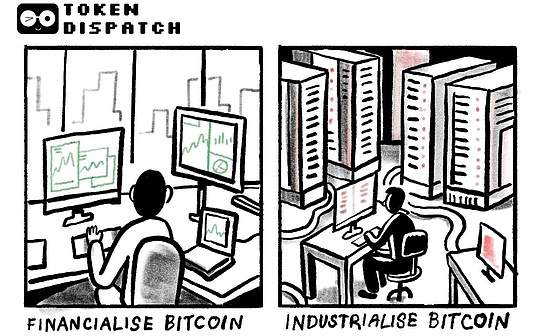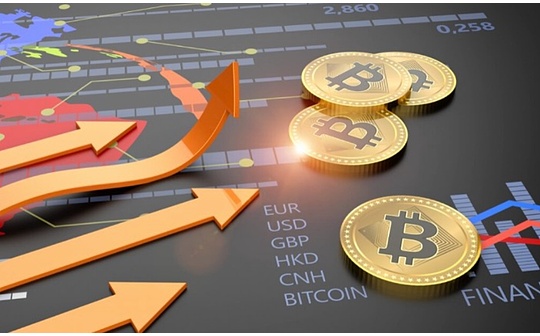
Source: Crypto Compound, compiled by Shaw bitchain vision
Ethereum has officially entered the price discovery stage.The second largest cryptocurrency by market capitalization broke through the all-time high of $4885 in 2021 and rose to above $4900 in a short period of time, laying the foundation for a possible decisive chapter in this cycle.Unlike the rises in many cryptocurrencies in the past, this breakthrough is not just speculation – it is driven by a shift in macroeconomic policy, institutional demand through new exchange-traded funds (ETFs), strong on-chain fundamentals, and a psychological threshold for changing capital inflows into the market.
Let’s analyze why this rebound is important, the drivers behind it, and the risks that still exist in the future.
Macro liquidity
Market operations depend on liquidity, and last Jerome Powell’s remarks were exactly what risky assets wanted to hear.In his speech at Jackson Hall, the Fed chairman acknowledged the rising risks to employment and suggested a rate cut could come earlier than expected.This dovish argument is enough to allow yields to decline, the dollar weakens, and the stock market to rise – these conditions have ignited a bull market in cryptocurrency in history.
Compared with Bitcoin, Ethereum performs more like a high beta liquid asset.When the cost of capital is low, investors seek growth and cyclicality, not just security.With Powell actually opening the door for a rate cut in September, Ethereum finds itself in a great environment to break through highs.
ETF Fund Inflows: New Demand Engine
The most important structural development of this cycle may be the launch of Ethereum spot ETFs.These investment vehicles provide institutional and traditional investors with a simple, regulated allocation of funds without access to wallets or exchanges.
In just a few weeks, capital inflows have soared to billions of dollars, with daily new additions exceeding hundreds of millions of dollars.The total assets under management have exceeded US$12 billion, and more than 6 million ETHs are currently entrusted in ETFs.These funds won’t return to the exchange in the near term – they are locked, reducing the tradable supply.
Earlier this year, when Bitcoin ETF was launched, it also triggered a similar demand shock.Today, Ethereum is experiencing its own structural buying, and the market has responded to it.
Ethereum and Bitcoin: Rotary Trading
In this cycle, Bitcoin plays the role of digital gold – stable and conservative, and is also the first stop for institutional investors to test cryptocurrencies.But once liquidity turns positive, investors usually turn to assets with stronger liquidity.
This is exactly the case with Ethereum.ETH is regarded as the “leveraged Beta” of liquidity – it is more responsive to capital flows than BTC, is closer to applications and more cyclical.The ETH/BTC ratio has climbed to annual highs, which has once again sparked discussions about whether Ethereum’s market cap can ultimately surpass Bitcoin.
Whether there is a reversal or not, it is important that investors believe that Ethereum is more explosive at the current cycle stage.
Leverage and liquidation
The original fluctuations in the price trend are not only related to fundamentals, but also to positions.Before the Jackson Hall meeting, leverage ratios on each exchange rose sharply.When Powell made dovish remarks, ETH prices soared and shorts were forced to replenish their positions.
The result is: liquidation amounts exceed $200 million in a few hours, most of which are ETH.This short squeeze is reflective – liquidation drives price increases, which leads to more liquidation, and this cycle goes on.It will amplify market fluctuations in the short term, but it can also clear weak positions, reset the market and return it to a healthier trend.
On-chain fundamentals
Unlike some periods in 2017 and even 2021, Ethereum’s fundamentals today provide real support for its valuation.There are several major trends that are particularly prominent:
-
Layer2 Growth: Networks such as Arbitrum, Optimism, and Base handle more transactions than the base layer of Ethereum, while paying for ETH.
-
Total lock value: Decentralized finance (DeFi) activity rebounded strongly, with total lock-in value (TVL) climbing back to over $60 billion.
-
Enterprise adoption: Upgrades such as Pectra can reduce costs by more than 90% and increase throughput, making ETH more suitable for actual use.
-
Supply News: Since the merger, Ethereum’s issuance has shown a deflationary trend during its peak use period.The higher the activity, the more ETH is destroyed, resulting in tightening supply during the bullish stage of the market.
These fundamental elements build a narrative that Ethereum (ETH) is not just a speculative token—it is the backbone of an evolving financial system.
Psychology of new highs
Breaking through the highest point in history is far more than just clearing technical resistance levels – it also changes market psychology.In 2021, traders who are buying close to the top have to wait nearly four years to make a comeback.Now that the upper limit has been broken, the price is no longer under pressure from the supply above.
This opens the door to price discovery, and in the process, the FOMO (fear of missing out) psychology becomes a driving force.Momentum funds flocked in as the model triggered when it hits a new high.Retail investors noticed the headlines and sought opportunities to participate.Even institutions that turned a blind eye to cryptocurrencies a year ago are now under pressure to explain why ETH has not been included in their asset allocation.
In the market, psychological factors are often as important as mathematical factors.At present, market sentiment has turned significantly bullish.
Global macro cross-effect
Ethereum is not an isolated transaction – it fluctuates with global markets.Three macro variables will be extremely important in the coming weeks:
-
Dollar:A weaker dollar will boost ETH/USD.If the dollar rebounds sharply, cryptocurrency prices may pull back.
-
Treasury bond yield:A yield below 4.2% will support risky assets.If the yield rebounds to 5%, you will face trouble.
-
stock market:The Nasdaq and S&P remain strong.If the stock market continues to rise, ETH may follow suit.
Currently, all three forces tend to support them.But they may quickly turn, and cryptocurrencies are able to react immediately.
The risks that are coming
Every rebound comes with risks.Ethereum’s breakthrough momentum is strong, but not indestructible.The main risks include:
-
Fed hawkish stance: If inflation accelerates again, Powell may be forced to change the direction of the policy.This will consume liquidity quickly.
-
ETF weakness: Early capital inflows are strong, but whether demand can continue is uncertain.We have witnessed Bitcoin ETFs cool down first and then rebound.
-
Verifier exit: More than 900,000 ETHs are waiting in line to withdraw.If a large supply flows into the market at the same time, price volatility may intensify.
-
Excessive leverage: After a big squeeze, the capital rate and open contract volume may overheat again, which makes ETH prone to a sharp pullback.
Awareness of these risks does not mean giving up bullish views—but keeping a realistic attitude.
Analysts’ expectations
After Ethereum’s breakthrough, several large institutions raised their target prices.Some institutions believe that $5,000 is about to come true.Others expect that if ETFs continue to have capital inflows and the Fed cuts interest rates, it will reach $7,500 by the end of the year.More radical forecasts suggest that it will reach $25,000 by 2028.
Skeptics warn that new highs tend to attract profit-taking from long-term holders.However, so far, demand has absorbed the selling pressure.The fact that Ethereum can break through the resistance level cleanly shows that the rise is not purely speculative – it is backed by structural capital flows.
What to look at next
Here are the highlights to focus on in the coming weeks:
-
Support position: $4100 is the most recent strong support level.Staying above this level can continue the uptrend.
-
ETF capital inflows: Daily data will reveal whether institutional investors are still actively buying.
-
Macro data: Job reports, inflation and the next Fed meeting in September will be crucial.
-
On-chain activities: Observe the number of L2 transactions, DeFi growth, and destruction rates to measure basic demand.
If all these factors remain consistent, Ethereum will not only maintain its breakthrough trend, but it may also expand it to a new and higher range.
Ethereum’s record high is more than just a number.This shows that the asset has developed into an important component of the financial system that is influenced by the macroeconomic, supported by institutions and driven by fundamentals.
Powell’s dovish stance provides the opportunity, ETFs provide the power, and Ethereum’s own ecosystem gives its architecture.Together, the three have created one of the most credible breakthroughs in cryptocurrency history.
This does not mean that prices will soar from now on.A callback will still occur, volatility will return, and the risk will still exist.But the current situation is very clear: Ethereum not only keeps up with Bitcoin, but also leads the market into the next stage of the cycle.
For traders, this means adapting to new trends.For investors, this means recognizing that the world’s second-largest crypto asset has just proven that it can break records in the right environment.
For the entire market, this means that the cycle has truly entered the next stage.






